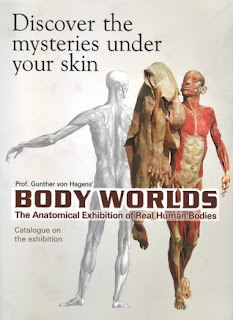Week 1: Two Cultures
In the
first week of DESMA 9, students were introduced to the concept of two cultures.
This term, coined by Charles Percy Snow, or C. P. Snow, was thoroughly discussed
in his lecture to Cambridge University in 1959, titled “The Two Cultures and
The Scientific Revolution.” The two cultures refer to the science and
humanities disciplines, which today are seemingly disparate fields of study. Interestingly,
Snow’s lecture focused on the disparity between the wealthy and poor
populations, but it facilitated many discussions about the understanding
between scientists and literary intellectuals. John Brockman even proposed a
third culture in 1995, consisting elites associated with technology and the
empirical sciences. To address this complicated issue, it is prudent to understand
how this paradigm shift came to be, and how it is reflected in life today.
Before this separation between the
arts and sciences started to form, many notable historical figures actually were
involved in both cultures. For example, Goethe was both a prolific poet and a
diligent researcher in the natural sciences, specifically the science of
colors. Over time, however, famous figures such as Einstein, Picasso, and
Marilyn Monroe contributed to the development of stereotypes. These stereotypes
continue today, which are partly responsible for the separation of the two
cultures.
(Johann Wolfgang von Goethe (1739-1832): A poet and a scientist.)
Researchers today also discuss how
the structure of university education contributes to divides among people of
different disciplines. For example, in his online talk, “Changing Education
Paradigms,” Sir Kenneth Robinson suggests that education is modeled after the
aspects of a factory, where students are forced to think a certain way at a
certain age. As a result, many schools are striving towards systems that nurture
students’ unique creativity and talents.
(Youtube video: "RSA Animation: Changing Education Paradigms")
As a
fourth-year chemical engineering student at UCLA, I observe the same cultural
separation due to an actual geographical divide. North campus consists of
students majoring in fields such as the humanities, arts, and social sciences.
On the other hand, south campus is home to engineering and science students.
Perhaps UCLA’s education system perpetuates stereotypes, but I feel that
students actually enjoy highlighting their differences. The north campus vs.
south campus debate, in my opinion, is a source of playful banter among the
student body. Nevertheless, I hope that this class teaches me to become more
aware of the both the differences and similarities between the two cultures, in
order to develop newfound respect for both types of disciplines.
(The perpetual North Campus vs. South Campus divide at UCLA)
References:
Johann
Wolfgang von Goethe (1749-1832). Digital image. Goethe. Pinterest, n.d. Web. 8 Apr. 2017.
Robinson, Ken. RSA ANIMATE: Changing Education Paradigms. Online video clip. Youtube. YouTube, 14 Oct. 2010. Web. 10 Apr. 2017.
Silverwing1310. North vs South Campus UCLA. Digital image. Deviant Art. Deviant Art, 4 Mar. 2011. Web. 8 Apr. 2017.
Snow, C. P. The Two Cultures And The
Scientific Revolution. New York: Cambridge University Press, 1961. Print.
Vesna,
Victoria. TwoCultures partt1. Online video clip. Youtube. YouTube, 30 Mar. 2012.
Web. 8 Apr. 2017.
Vesna,
Victoria. TwoCultures pt2. Online video clip. Youtube. YouTube, 31 Mar. 2012.
Web. 8 Apr. 2017.
Vesna,
Victoria. TwoCultures pt3. Online video clip. Youtube. YouTube, 2 Apr. 2012.
Web. 8 Apr. 2017.




Comments
Post a Comment